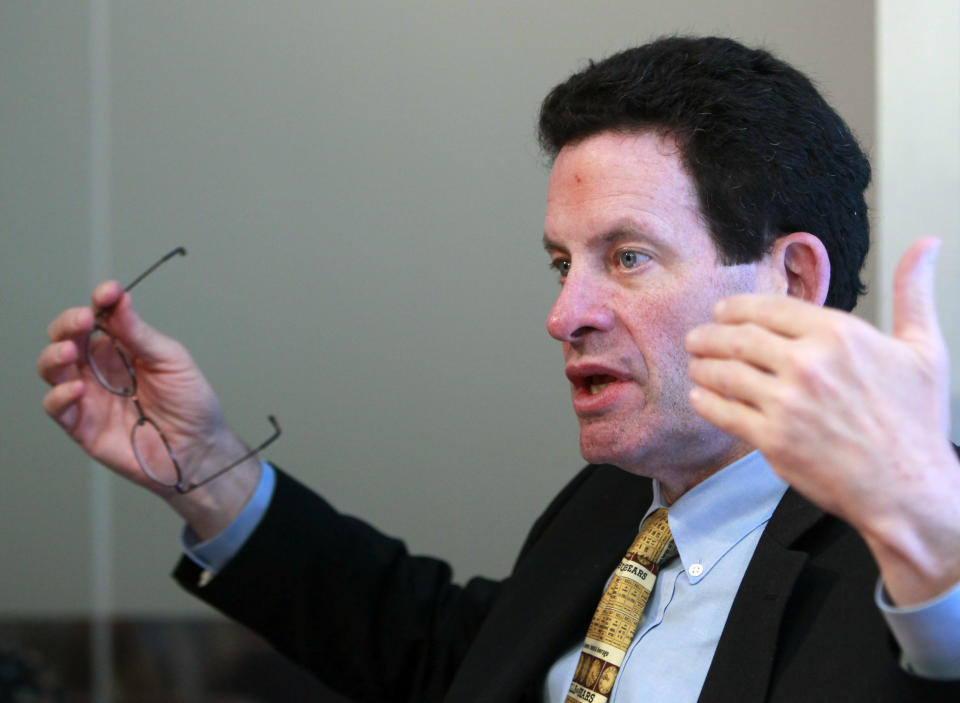Billionaire investor Ken Fisher: Fed should purge its multi-trillion dollar balance sheet
The Federal Reserve should be purging its balance sheet.
That’s the assessment from billionaire investor Ken Fisher, founder and executive chairman of Fisher Investments.
“Big corporations, top quality borrowers can borrow [money] in any part of the world they want — it’s the marginal borrower you want to help,” he told Yahoo Finance.
Fisher said people tend to think that cutting interest rates leads to more borrowing. More lending should boost the economy.
“But you have to have the provider ready to provide it,” Fisher said, referring to the banks. “When you make the yield curve steeper, banks become more eager to lend and as they become more eager to lend they lend to the more marginal borrower — the lower quality corporate borrower.”
The yield curve remains very flat and even spent weeks in August in inverted territory, where short-term rates were higher than long-term rates. An inverted yield curve has preceded past recessions.
“What the Fed really ought to be doing is purging itself, disgorging itself of all the stupid bonds they bought in the first place during quantitative easing, which was stupid and misguided,” he said.

The Fed’s balance sheet grew from roughly $1 trillion before the 2008 financial crisis to a staggering $4.5 trillion peak in 2017. That year, the Fed took gradual steps to start to reduce its balance sheet. It began a process known as quantitative tightening. Here, the Fed would allow a small portion of its bond holdings to mature instead of reinvesting those proceeds in new bonds. This process gradually reduced the size of the balance sheet.
But the Fed ended that process in late July 2019, amid worries over slowing economic growth.
“Right now [the Fed should be] disgorging the bonds, pushing the price of the long bond up a little bit, steepening the yield curve because banks are in the business of taking in short-term deposits to make long-term loans, making them more eager to lend. Who wants to lend money at these rates.”
On Wednesday, President Trump, in a tweet, called for the Fed to cut interest rates to “ZERO, or less.”
Scott Gamm is a reporter at Yahoo Finance. Follow him on Twitter @ScottGamm.
More from Scott:
Trump slams Fed Chair Powell: 'He’s like a golfer who can’t putt'
S&P 500 will plunge another 15% by the end of this year: strategist
Why China’s falling yuan could be good for U.S. stocks: strategist
Verizon Q2 profit beats estimates, boosted by wireless growth
Here is how corporate stock buybacks are changing the earnings picture
Follow Yahoo Finance on Twitter, Facebook, Instagram, Flipboard, LinkedIn, and reddit.

 Yahoo Finance
Yahoo Finance 

